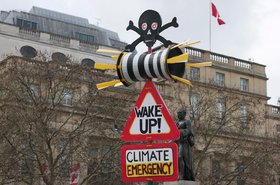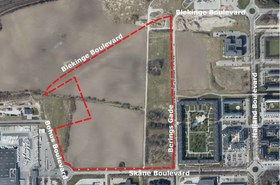More than 90 US companies have committed to halve their emissions by 2030, backed by the US Department of Energy (DOE).
In its Better Climate Challenge, DOE is calling on US organizations to set bold wide greenhouse gas reduction targets and share tips on how to achieve them. DOE has promised to provide technical assistance and to help set up partnerships, to support President Biden's goal to get the US climate neutral by 2050 The program will be delivered with the US Department of Housing and Urban Development.
Data center firms in the group include Sabey, QTS, and engineering firm Johnson Controls.
Change and benefits
“The Challenge is not just about cutting carbon pollution but about supporting communities that all too often bear the brunt of climate change while seeing too few of the benefits from the energy transition,” said US Secretary of Housing and Urban Development Marcia L. Fudge. “We have a tremendous opportunity to deliver climate justice to disadvantaged communities, lower energy expenses in affordable housing, and accelerate mitigation efforts to protect at-risk communities from natural disasters and the impacts of climate change.”
If all US organizations reduced their greenhouse gas emissions by 50 percent, it would save nearly 1.5 billion tons of CO2e per year, more than the emissions from the country's homes, said the DOE: "The bold climate goals of the Better Climate Challenge will foster cutting-edge innovation and help American businesses decarbonize a crucial sector while they reap the benefits of investing in cleaner and cheaper energy,” said White House Climate Advisor Gina McCarthy.
The program was announced by Secretary of energy Jennifer Granholm, along with Fudge and McCarthy at an online roundtable with Better Climate Challenge partners.
Sabey Data Centers has committed to a 50 percent reduction in GHG emissions across its 3.8 million-square-foot portfolio, with internal goals to "reduce emissions even further", planning to reduce all scope 1 and scope 2 emissions by or before 2029. The firm's goals have been validated by the Science Based Targets initiative, and the tools to get there include "investing in renewable energy projects, collaborating with utilities on green power programs, and researching and implementing carbon-neutral technologies."
Sabey has also promised to reduce non-IT energy intensity by 20 percent over ten years, as part of the related Better Buildings Challenge.
QTS has promised 50 percent GHG reductions within 10 years from a 2022 baseline, and will implement energy efficiency initiatives at all its facilities.
Engineering firm Johnson Controls has committed to reducing energy intensity by 25 percent in 10 years for its US manufacturing plants using a 2009 baseline, in addition to a 25 percent reduction achieved in 2002 through 2008.
Diesel engine maker Cummins has also signed up to the program, as has Schneider Electric, with a showcase project that includes a 1MW dual voltage solar farm that increases efficiency by supporting both 1000V and 600V DC.




